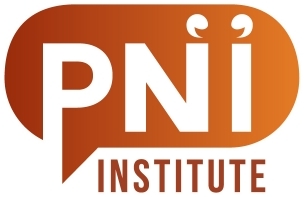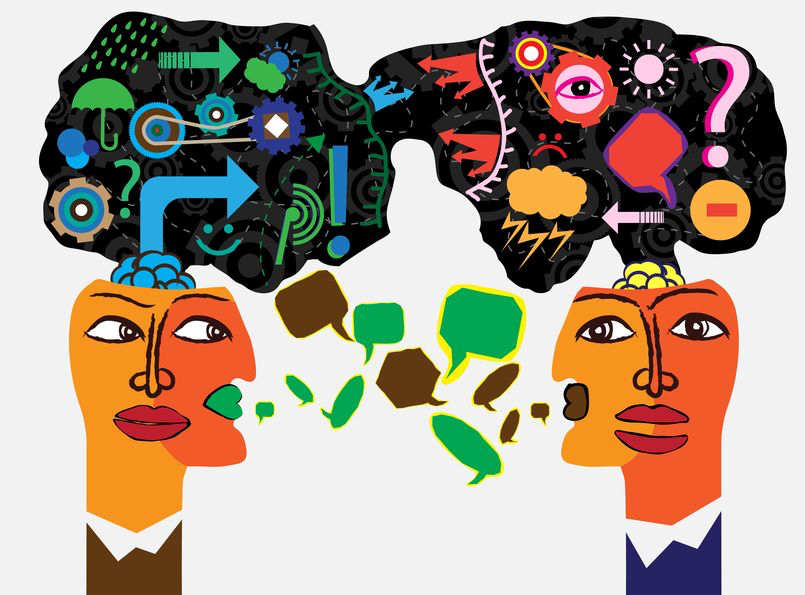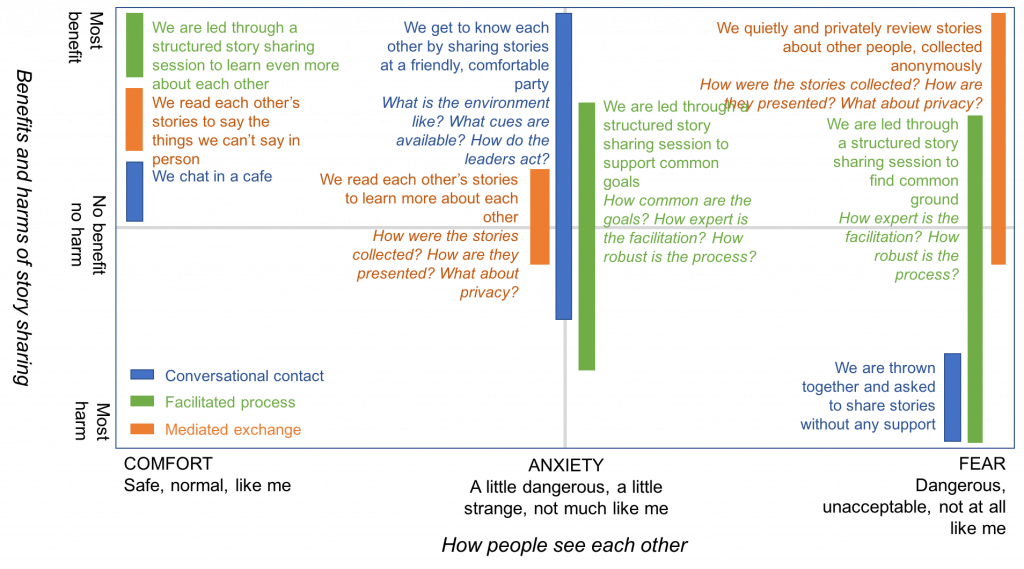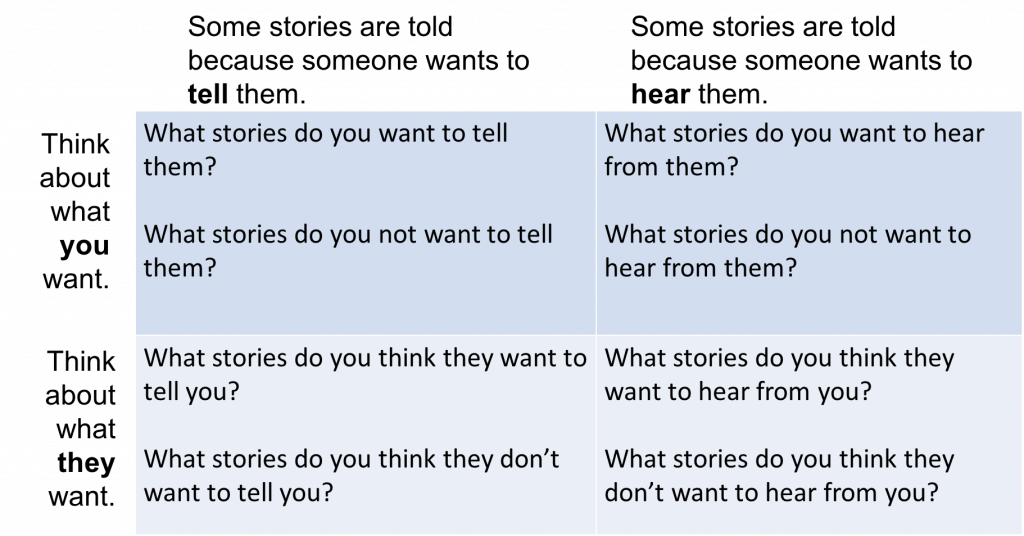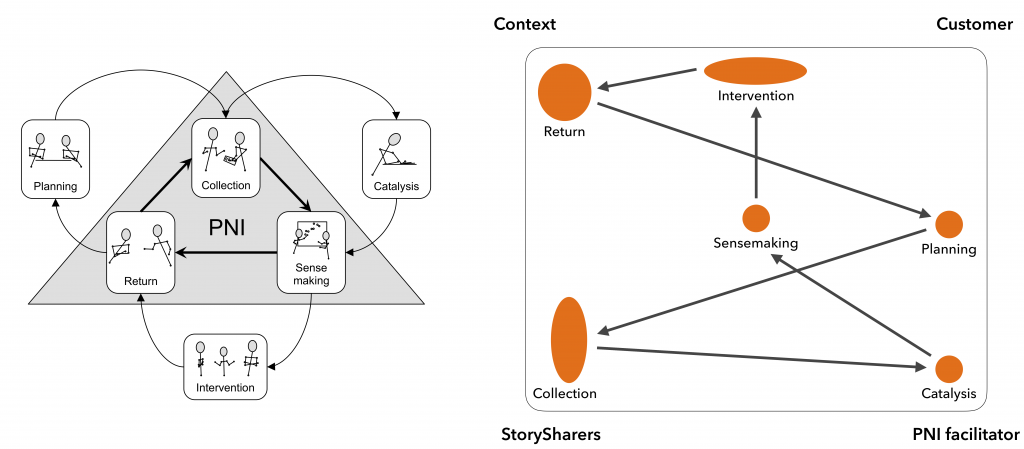On our PNI Institute call on September 12, 2018, we talked about the use of PNI for dialogue, or bringing people together.
Tune in to listen to the discussion.
We’ve been collecting some things to talk about before each call, sometimes drawing on other people’s frameworks and ideas, and sometimes writing our own things. This time Harold and I wrote three blog posts to support our discussion:
- Sharing stories with strange people : My recommendations for the best ways to help people share stories when their feelings toward each other can be described as comfort, anxiety, or fear. An attempt to explain why I recommend these things.
- Dialogue and conflict during the PNI stages : Harold’s look at how conflict arises during the practice of PNI, and where we need to pursue dialogue to make PNI work as it should.
- Complicating the narratives with PNI : Harold’s look at how making things messier is something journalists can do with story work to help people move out of simplified mindsets.
Sadly, we didn’t manage to talk about all three posts, just the first two. We hope to talk about stories in journalism on another call — the upcoming “Enlightening people” call in January might be a good fit for that discussion.
So, first, we talked about “Sharing stories with strange people.” We talked about the bars on this diagram:
And while we were talking, another diagram emerged.
We thought about how that diagram might grow into a useful PNI exercise someday. Here’s how I think you might be able to use this diagram in a workshop.
- Convene, separately, people in two or more groups who feel fear (or contempt, or anxiety, or uncertainty) towards each other.
- Ask the people in each group to share some stories about their common experiences, using some story-eliciting questions to get them started. Keep going until people feel that they are in a somewhat comfortable place, where they feel supported and listened to.
- Ask the people in each group to tell some stories, or refer to some stories, that make sense to them as answers to the questions in the diagram. Write down some names for the stories (so people can remember them).
- Ask the people in each group (again separately) to choose among the stories they have written down stories they are willing to show to the people from the other group.
- Finally, bring the two groups together into one space. Have the people in each group experience the stories chosen by the other group to show to them, either directly (someone tells the story) or indirectly (they watch a video or listen to an audio recording or read a written version of the story).
- Ask the people in each group to convene separately again and discuss what they learned from what they experienced.
- Bring the groups back a second time for a general discussion. Talk first about what they have learned from the experience. Then show everyone some some story-eliciting questions based on commonalities in the stories the groups chose to share with each other (and their separate discussions afterward). See if people are ready to start sharing stories as one larger group.
So that’s interesting, right? If you (the person reading this post) have any ideas to improve on it, tell us!
Finally (with not that much time left) we talked about Harold’s diagram (the one on the right) of where the conflicts lie in PNI projects:
The diagram shows where there are certain tugs-of-war between groups and forces as a PNI project plays out. We talked about how it might be useful to map out where the productive conflicts, the destructive conflicts, and the opportunities for dialogue are likely to take place in the stages of a project. (We did not do that mapping, mind you, but we’d like to. It might come up again sometime.)
We referred to this book on the call:
Note: PNI Institute calls take place the second Wednesday of each month, at 14:00 in New York, 20:00 in Europe. Please go to https://zoom.us/j/9067497326 to join the Zoom meeting.
